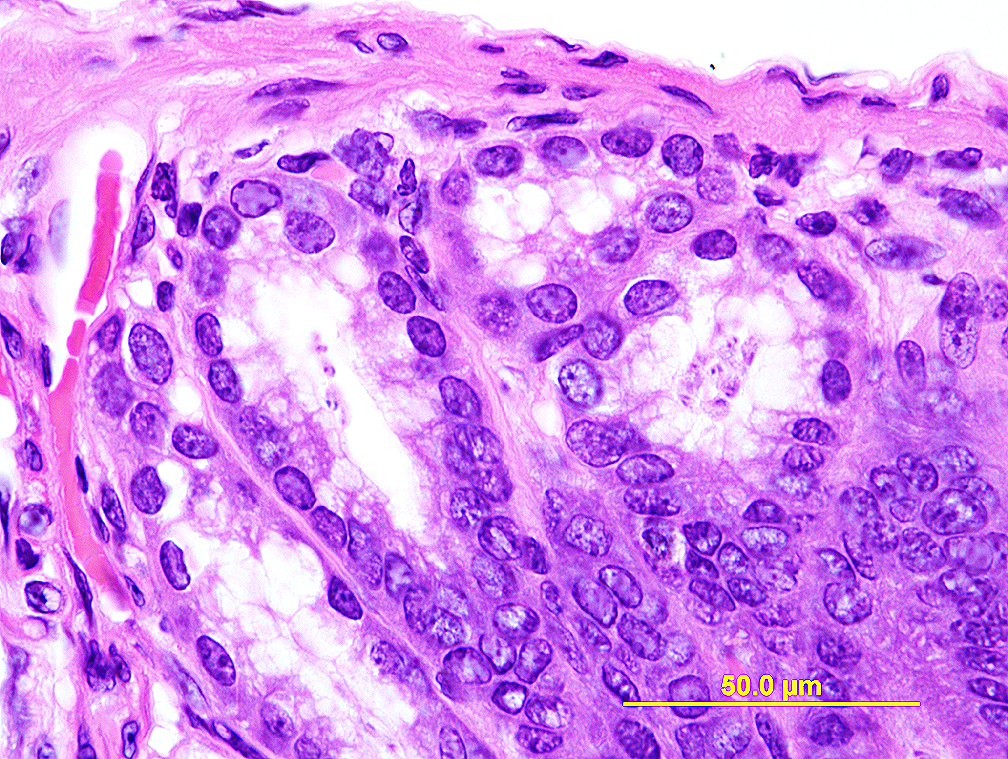Etiology: Spironucleus muris is a flagellated protozoan that dwells on the small intestinal mucosa.
Incidence: Incidence of infection is occasional.
Transmission: Ingestion of infective cysts passed in fecal material is the primary mode of transmission. The incidence of infection is low in conventional mouse colonies.
Distribution: Spironucleus is found primarily in the crypts of the duodenum and pyloric glands (arrows A., B.). In young animals, luminal protozoa are more numerous.
Clinical Signs: Clinical signs are not usually observed. Heavy infections in weanling mice have been reported to cause catarrhal enteritis, resulting in depression, abdominal distension, anorexia, pasty feces and possibly death.
Diagnosis: Direct smears of small intestinal contents reveal fast darting protozoa. PCR of feces can be used for diagnosis.

Diagnostic Morphology: Trophozoite:7- 9 x 2- 3 µm, piriform (teardrop)-shaped or carrot-shaped, with 6 anterior flagella, 2 posterior flagella, 2 anterior nuclei and 2 separate axostyles (C).
